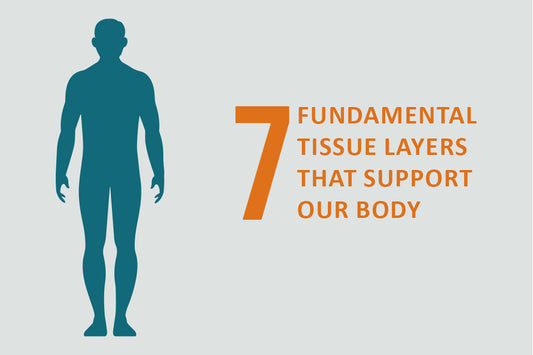Yoga is not just about poses—it’s also about the breath. Among the many breathing techniques in yoga, Breath of Fire stands out as one of the most energizing and stimulating. Known in traditional Kundalini Yoga, this practice involves rapid, rhythmic breathing that works in sync with your abdominal muscles. It can help you feel more alert, centered, and connected to your body.
If you’ve ever felt tired, unfocused, or simply wanted to refresh your energy during the day, Breath of Fire might be just what your routine needs. But like any practice, it’s important to learn how to do it correctly to avoid discomforts such as dizziness or shortness of breath. This blog will explain what Breath of Fire is, its key benefits, and how you can safely practice it.
What is Breath of Fire Yoga?
Breath of Fire is a powerful breathing technique often taught in Kundalini yoga classes. It involves rapid inhaling and exhaling through the nose, while keeping your chest still and contracting your abdominal muscles with each exhale. The movement is quick, strong, and rhythmic, almost like a bellows.
Unlike long deep breathing, where you breathe slowly and fully, Breath of Fire keeps the breath short and consistent—usually around 2 to 3 breaths per second. It’s often used at the start or end of a yoga practice to energize the body and awaken the mind.
How to Practice Breath of Fire Correctly
If you're new to Breath of Fire, it’s best to start slowly. Practicing it the wrong way can lead to feeling dizzy or light-headed. Here’s a step-by-step guide to doing it safely:
- Find a Comfortable Seat
Sit cross-legged on the floor or on a chair with your spine straight and shoulders relaxed. Place your hands on your knees or in a mudra (hand gesture) of your choice.
- Focus on Your Abdomen
This breathing exercise begins in the belly. As you inhale and exhale, your abdominal muscles should do most of the work. The inhale happens naturally as you quickly contract your abdominal muscles to force the air out through your nose.
- Begin Slow and Steady
Start with one breath every second. Focus on equal inhale and exhale lengths. Your breathing pattern should be steady and balanced.
- Pick Up the Pace
Once you’re comfortable, begin to breathe faster—about 2 to 3 times per second. Maintain the rhythm without straining. Your solar plexus (the area above your navel) should pulse slightly with each breath.
- Watch Your Form
Keep your chest relaxed and avoid tension in the neck or shoulders. If you feel light-headed, stop and return to long deep breathing until you feel normal again.
Tips for a Safe Practice
- Start with 30 seconds and slowly work your way up to 1–3 minutes.
- Practice on an empty stomach.
- Don’t try this if you're pregnant or dealing with any pre-existing health issues without consulting a yoga expert.
- If you ever feel dizzy, stop immediately and rest.
Key Benefits of Breath of Fire Yoga
Practicing Breath of Fire regularly can support both your physical and mental well-being. Here are some of the ways this form of yoga can help:
Breath of Fire encourages active breathing and can help your lungs stay strong and flexible. It trains your body to use your full breath and can be a great way to help keep your lung capacity in check.
- Energizes the Body Naturally
Many people use this breathing exercise as a natural way to wake up in the morning or power through an afternoon slump. It gets your healthy circulation and warms your body from within—hence the name, “fire” breath.
- Supports Mental Clarity
The rhythmic breathing helps you focus and stay present, which can be helpful during stressful or overwhelming moments. It’s like hitting a reset button for your brain.
- Strengthens Core Awareness
Since the breath is driven by abdominal movement, it naturally engages your core. Over time, this awareness helps strengthen your center and support good posture.
- Helps Ease Emotional Tension
This breathing pattern is often used in kundalini yoga to release built-up emotional energy. Practicing it regularly can help restore a sense of emotional balance and ease internal discomforts.
How Breath of Fire Compares to Other Breathing Practices
Breath of Fire is not the only way to breathe mindfully. Here's how it compares to some other common methods:
- Alternate Nostril Breathing: This technique calms the cognitive health by switching between nostrils while breathing. Unlike Breath of Fire, it’s slow and grounding.
- Long Deep Breathing: A gentle and slow inhale-exhale pattern that helps relax the body and center the mind. It’s the opposite of the fast pace used in Breath of Fire.
While these practices serve different purposes, they can be combined into a full yoga practice to help support your physical and mental routine.
Conclusion
Breath of Fire Yoga may sound intense, but with proper guidance and mindful practice, it can become a powerful part of your daily routine. This unique breathing technique not only helps awaken your energy but also supports focus, balance, and deeper connection to your body.
Whether you’re already into breathing exercises or just starting your yoga journey, adding Breath of Fire can bring something new to your practice. Just remember to go slow, listen to your body, and give yourself time to build confidence. As with all things in yoga, consistency brings the greatest rewards.
Ready to try it out? Start with just 30 seconds today—and feel the fire from within.






